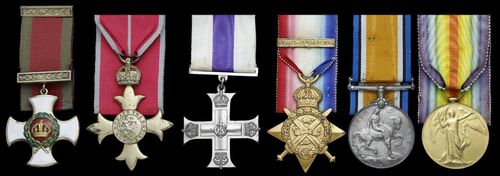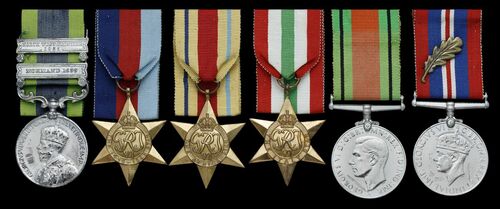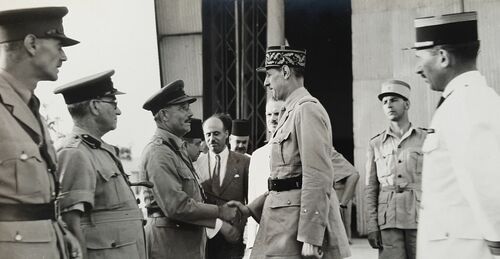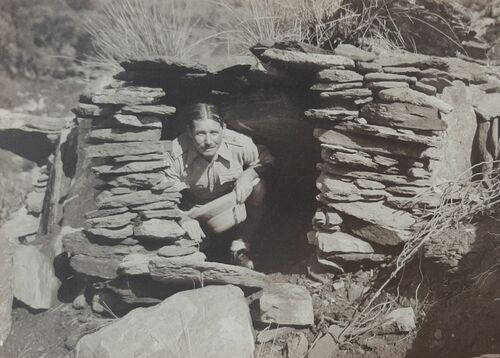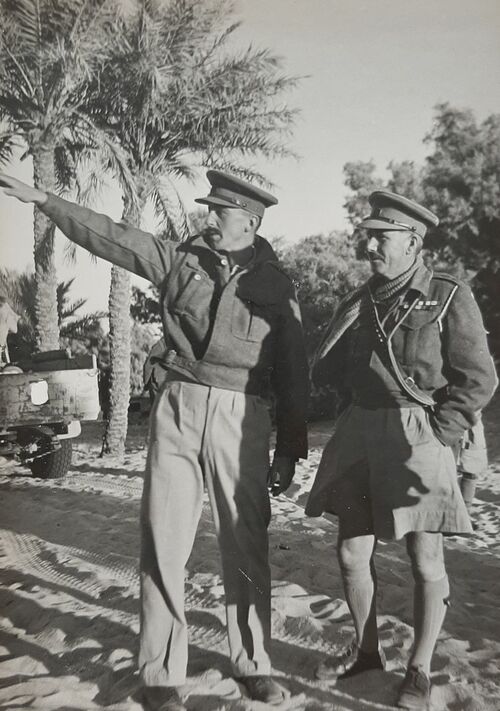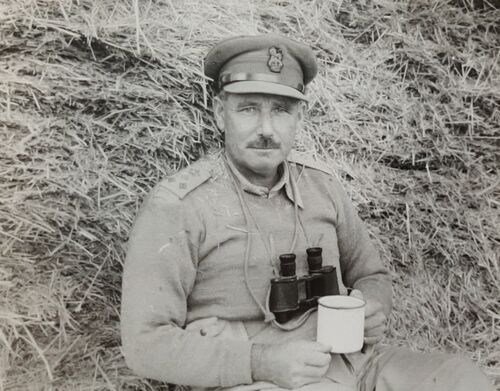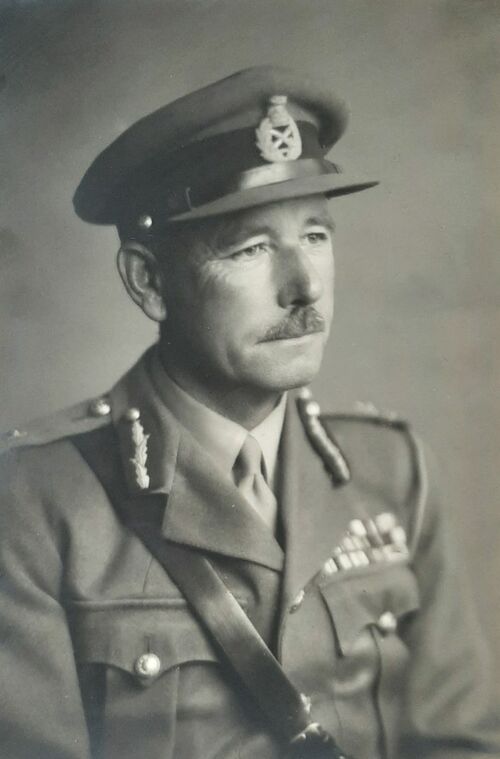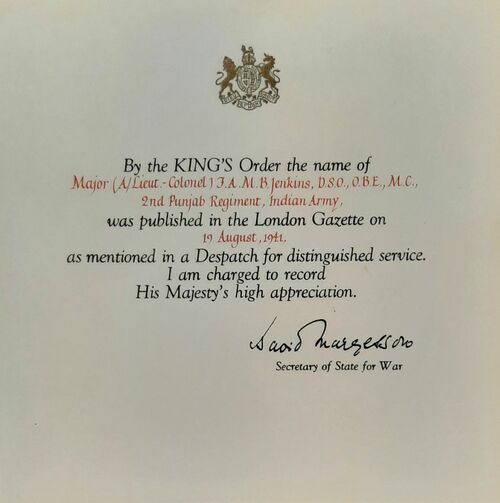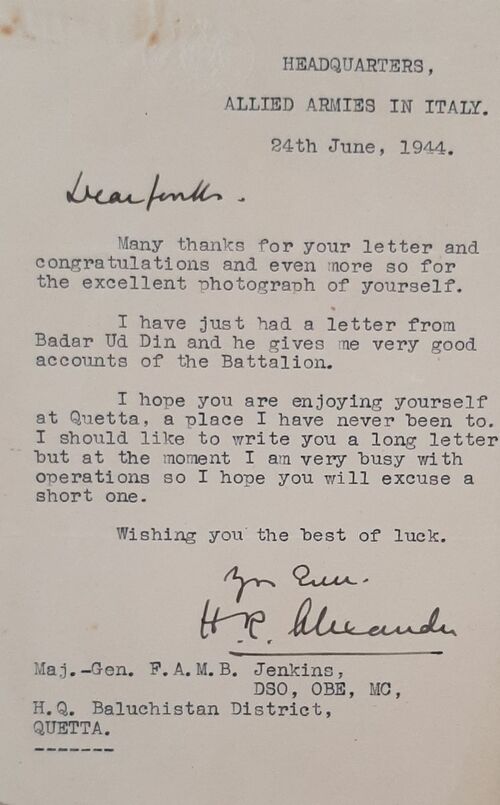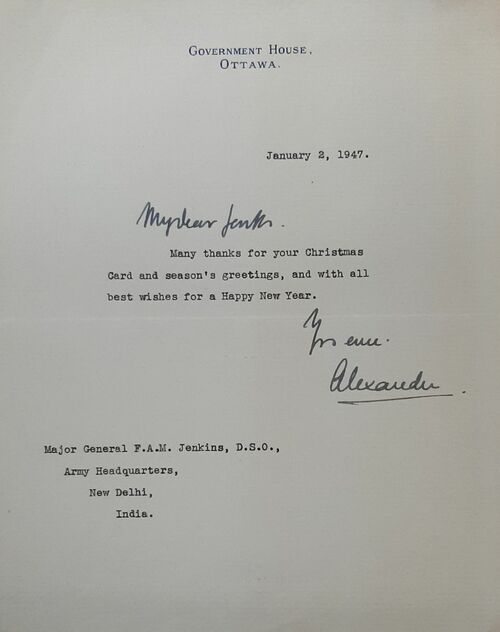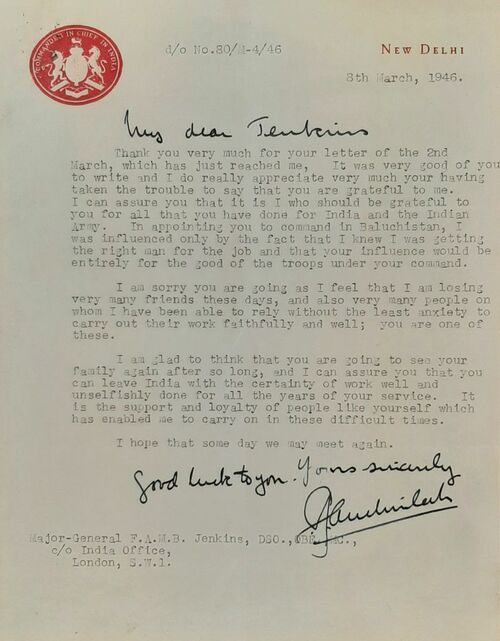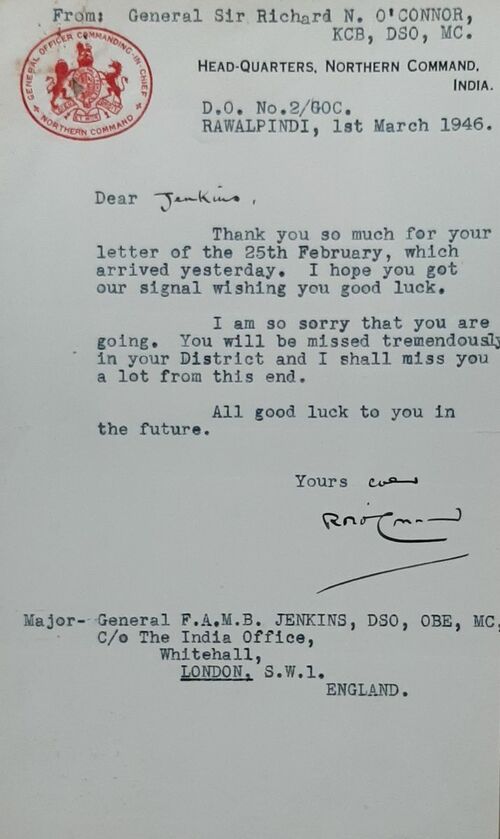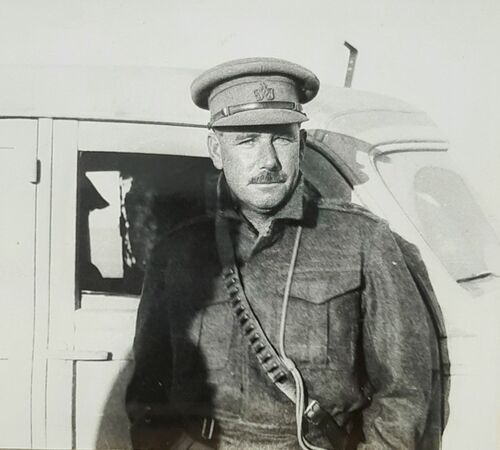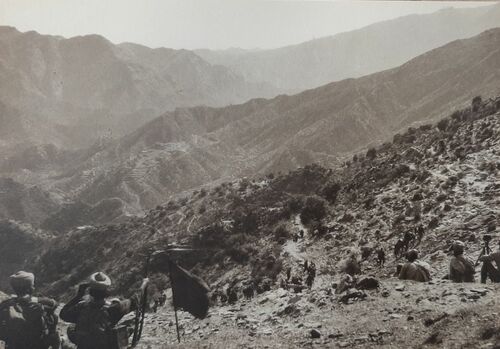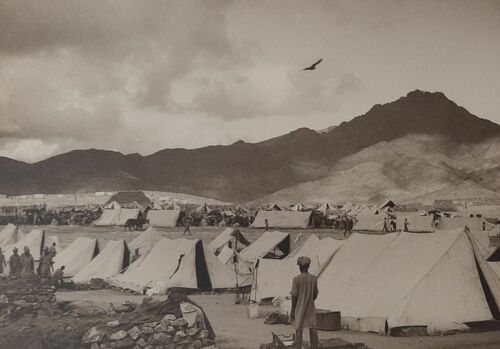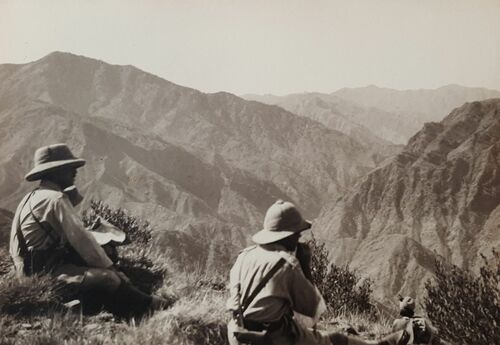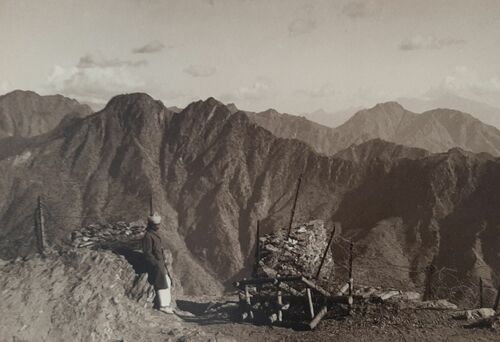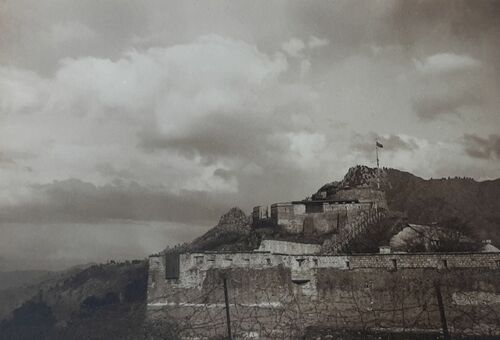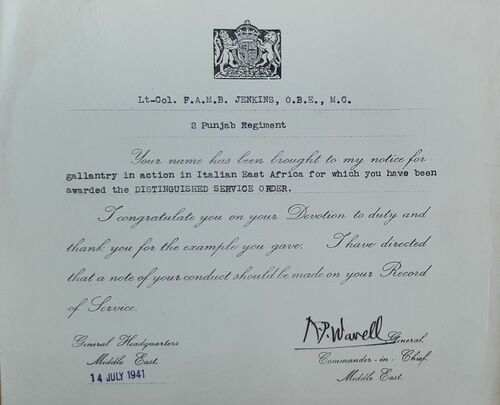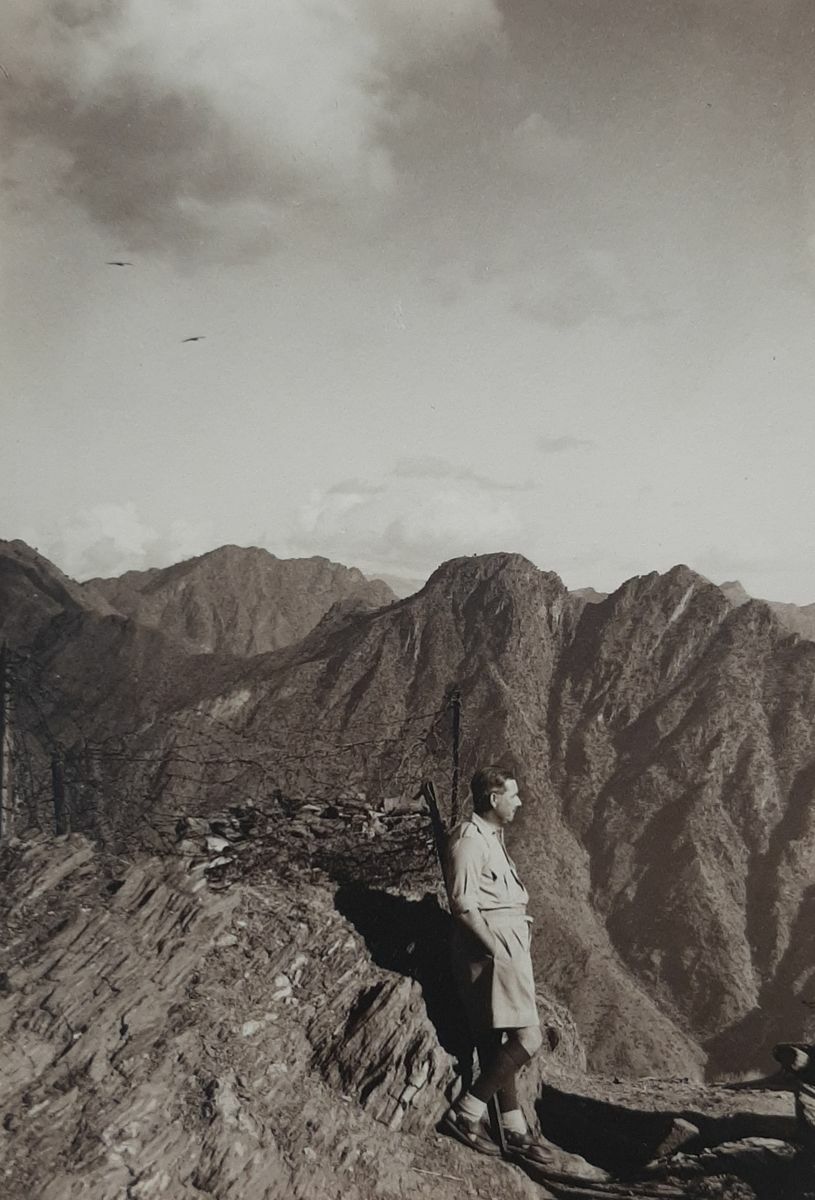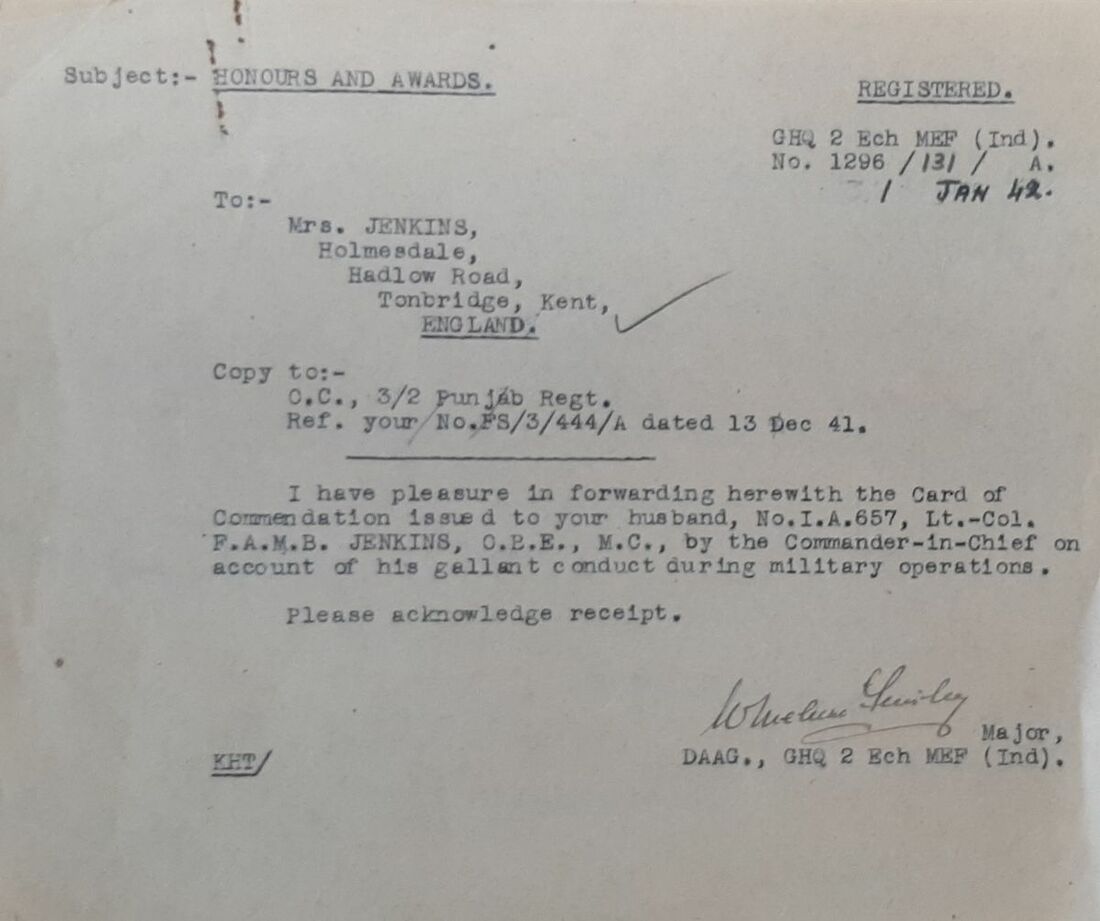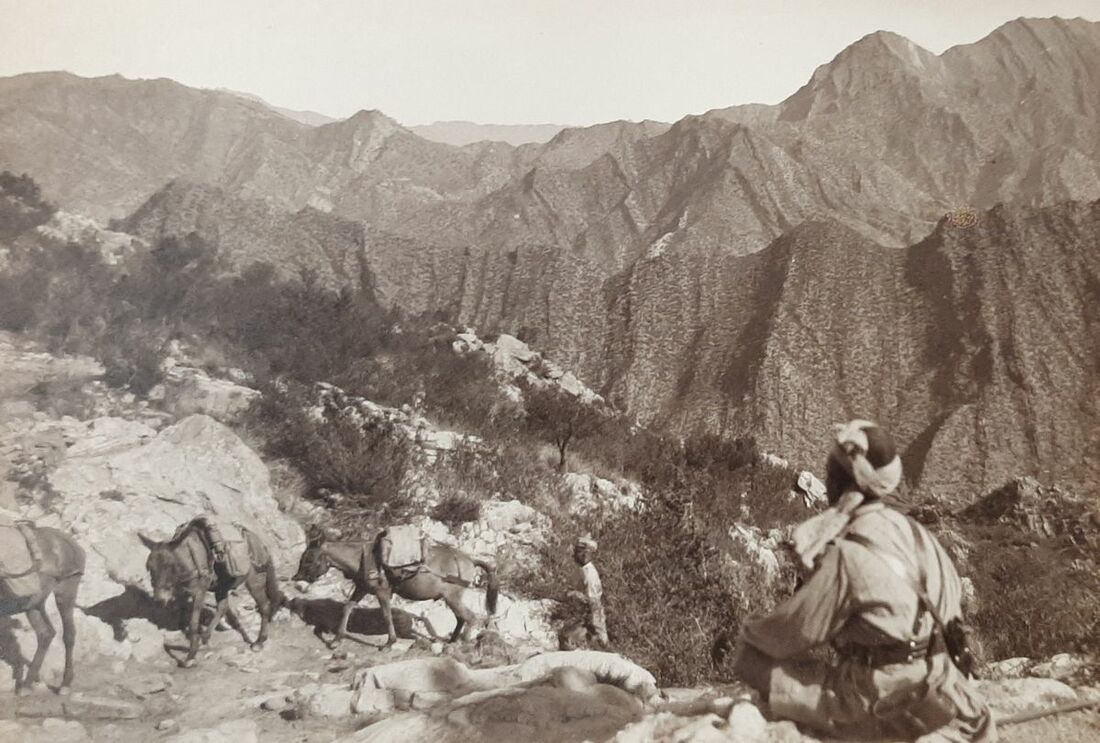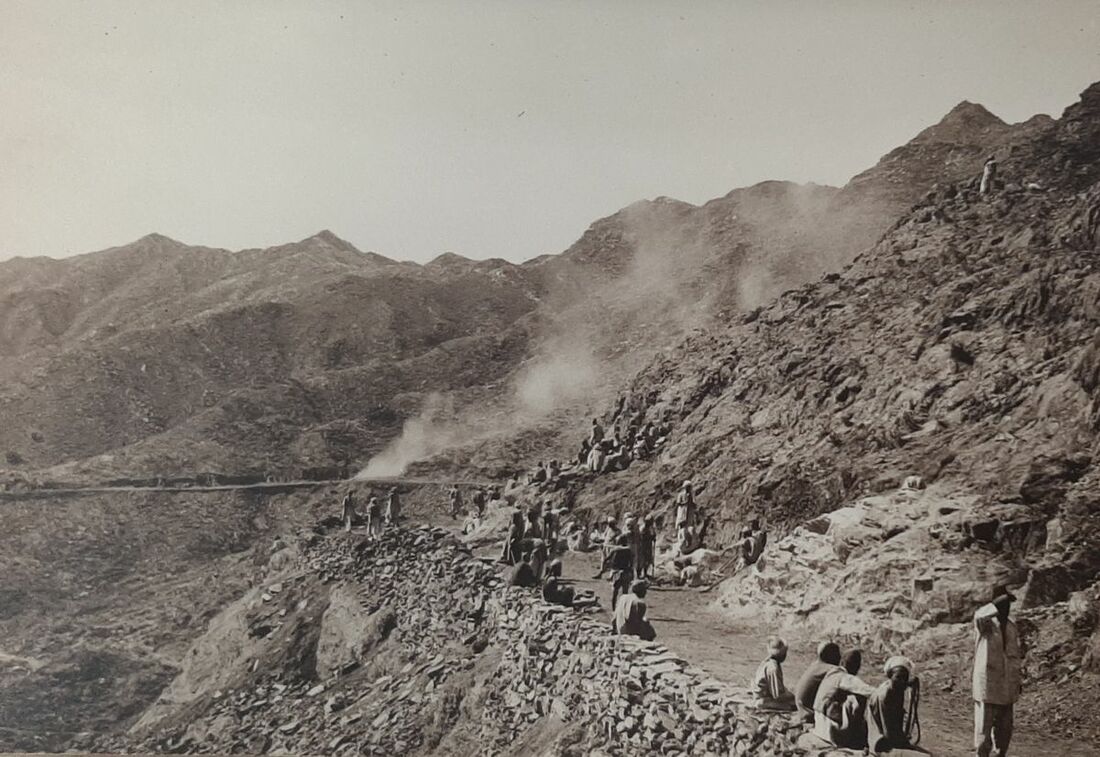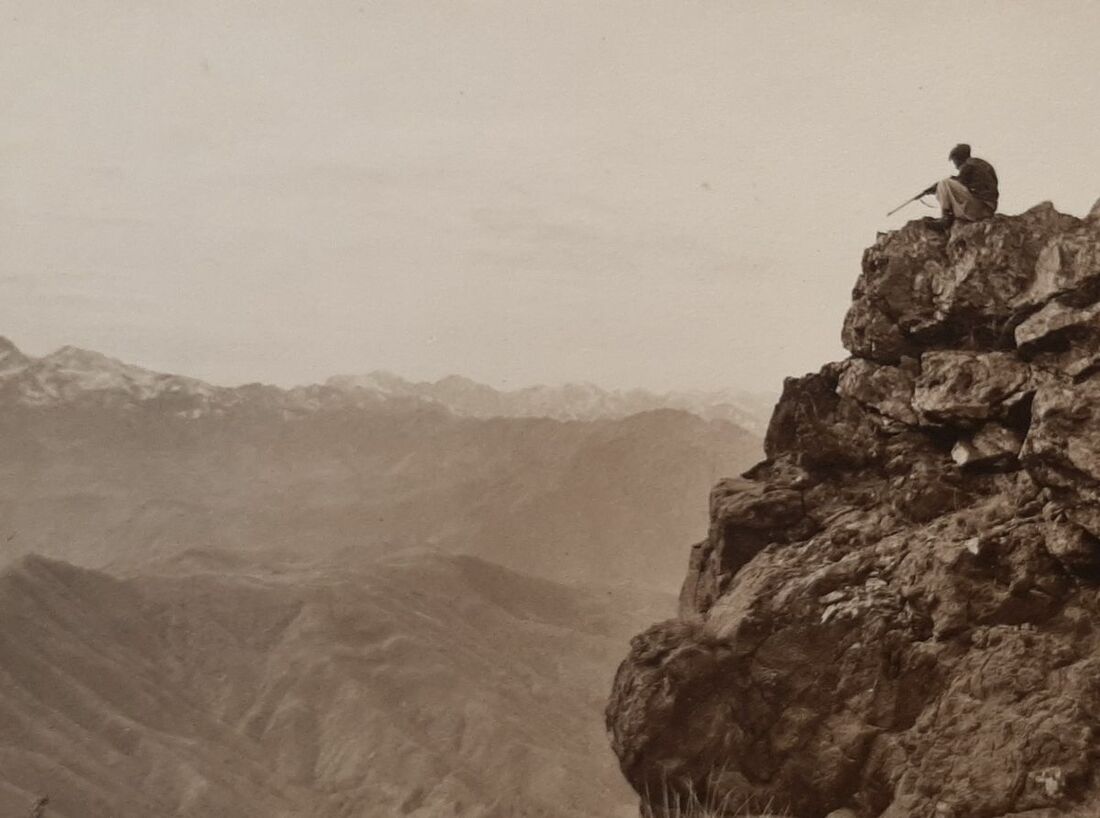Auction: 24002 - Orders, Decorations and Medals
Lot: 207
Sold by Order of a Direct Descendant
'Pasha introduced Monty to our Brigade-Commander - Brigadier F. A. M. B. Jenkins. The whole Brigade was devoted to Jenkins, not only because he was the man who had trained us to knife-edge efficiency but because we admired his soldiering ability and experience'
Eric Wilfred Robinson-Horley remembers Major-General Jenkins, in his memoir Last Post: An Indian Army Memoir
The Immediate 'Italian Somaliland 1941' D.S.O., 'North-West Frontier 1936' O.B.E., 'Palestine 1918' M.C. group of twelve awarded to Major-General F. A. M. B. Jenkins, 2nd Punjab Regiment
His remarkable service saw him cut his teeth on the North-West Frontier and Palestine, see bloody fighting in Mohmad Country in the 1930s and later earn his D.S.O. for his remarkable leadership of the 3/2nd Punjab Regiment during the Battle of Karen, being further 'mentioned' in Abyssinia and Syria
Distinguished Service Order, G.VI.R., silver-gilt and enamel, the reverse officially dated '1941', with its original retaining pin; The Most Excellent Order of the British Empire, Officer's (O.B.E.) breast Badge, Military Division, silver-gilt and enamel, hallmarks for London 1928; Military Cross, G.V.R., unnamed as issued; 1914 Star, clasp (1840 Pte. F. A. Jenkins. 1/28 Lond:R.); British War and Victory Medals (Capt. F. A. M. B. Jenkins.); India General Service 1908-35, 2 clasps, Mohmand 1933, North West Frontier 1935 (Capt. F. A. M. B. Jenkins, 3-2 Punjab R.); 1939-45 Star; Africa Star; Italy Star; Defence and War Medals 1939-45, with M.I.D. oakleaf, sometime lacquered, good very fine (12)
D.S.O. London Gazette 19 August 1941, the original Recommendation states:
'During the recent operations March 17-1 April, Lieut. Col. Jenkins has again displayed the highest qualities of leadership.
From 17-19th March his Bn tenaciously held on to ground gained immediately north of Fort Dolodorodce against a number of counter-attacks.
On 25th March his Bn successfully captured Railway Ridge and on March 29th, unassisted by Arty support, the Bn, after an advance of five kilometres and against heavy M.G. fire, secured the high ground in the Addigares area - a feature so essential for the final breakthrough.
It was due to his personal leadership, untiring energy and drive that his battalion has been so successful.'
O.B.E. London Gazette 7 February 1936:
'...for valuable services rendered in the field in connection with the Loe-Agra Operations, North-West Frontier of India, during the period 23rd February to 13th April, 1935.'
M.C. London Gazette 3 June 1919.
Frederick Arthur Montague Bertram Jenkins was born at Kensington, London on 24 August 1891, the son of John and Katherine Jenkins and nephew of Brigadier-General Noble Jenkins, C.M.G., C.B.E. He enlisted immediately on the outbreak of the Great War and entered the conflict as a Private with the 28th (County of London) Battalion (Artists Rifles), London Regiment on 26 October 1914.
The Great War
Soon after arriving in France, the Battalion was established as an Officer's training formation which Jenkins joined. He was commissioned 2nd Lieutenant with the East Yorkshire Regiment on 26 May 1915 and joined them for the next two years. Seconded for service with the Indian Army on 16 March 1917, he was posted to the 1/72nd Punjabis, a unit which was stationed on the North-West Frontier attempting to keep order amongst the ferocious tribes of that region.
They were stationed near Bannu in 1917 as part of the Waziristan Field Force before being ordered to the Tochi Valley in August 1917. One remarkable event occurred here when the Jenkins and his new Regiment were called upon to drive out a band of Dacoits from a sugar-cane field, The Golden Galley by Colonel Sir Geoffrey Betham states:
'On 1st January 1918 a gang of well-armed dacoits was found to have dug in among thick sugar-cane about 11 miles from Bannu, and although they were soon surrounded by police and a squadron of cavalry their capture was considered likely to result in disproportionate casualties. Hand-grenade volunteers were therefore called for from the 72nd, and soon afterwards a party of six men under Lieut. F.A.M.B. Jenkins arrived on the scene by armoured car. The dacoits were successfully bombed out, seventeen of them being killed.'
The Regiment remained in India until March 1918 when they were posted to Egypt and from thence to Palestine, arriving at Suez on 10 March. They moved into Palestine and joined the line, seeing little active fighting until 28 July when they were called upon to carry out a major raid at Gurkha Hill which saw the award of an M.C., three I.O.M.s and one I.D.S.M.
The Regiment remained in the east for the rest of the war, seeing heavy fighting in the final days notably at El Tireh, a heavily fortified Turkish position. After the signing of the Armistice with the Ottomans they remained in the area and largely they remained in Palestine until 1921 when they were posted back to India.
The North-West Frontier
They remained in India for the next decade, with Jenkins being advanced Captain on 26 February 1920. The Regiment was posted to the Nowshera Brigade in December 1932 and were still with them for the Mohmand Operations in 1933. Unrest amongst the Mohmand tribes caused the Brigade to launch a punitive expedition in July 1933, at first the sight of British troops quietened the opposition however in the long-run it solidified opinion against the British.
Returning to Nowshera Jenkins was further promoted Major on 3 February 1934. A Faqir using the Loe Agra salient as a base was one of the chief mischief makers and in 1935 a further operation was launched against them. This expedition was commanded by then Brigadier but future Field Marshall Harold Alexander, who was to develop a close friendship with Jenkins or 'Jenks' as he greeted him in his correspondence.
Despite expectations it had proved hard going and after the British finally cleared the area, returning to their barracks, a lashkar invaded and re-occupied the Loe Agra region. Again marching out the Brigade within days they were coming under regular sniper fire every evening, two platoons of the 3/2nd Punjab Regiment (as the 72nd Punjabis had been re-designated) slipped out of camp and ambushed their attackers, killing three and wounding another.
Advancing to Loe Agra they reoccupied the region and spread out to cover the area, soon 3/2nd came under attack along with a Battalion of the Duke of Wellington's Regiment. They saw very heavy fighting including night attacks, an example of the brutality of the action is given in The Golden Galley:
'The attack began about 7.30 p.m., just after dark, when Shamozai swordsmen attempted to rush the machine-gun post. This resulted in severe hand-to-hand fighting; but the tribesmen's attack, although pressed home with considerable ferocity, was beaten back by the men of the 3/2nd under the inspiring leadership of jemadar Mohammed Baksh.'
This formed part of the action later known to the Battalion as the Defence of Kila Hari. Reinforcements ended the contest and the British once again gained full control of the Loe Agra plateau. The commander of the Battalion, Lieutenant-Colonel Radley M.C. was awarded the C.I.E. while Jenkins was appointed an O.B.E.
Italian Eretria
The Battalion joined 5th Division on the outbreak of the Second World War and was posted to the Middle East in the summer of 1940. They were sent to Gebeit above Port Sudan and later joined 'Gazelle Force', a mobile unit within the division. Jenkins was promoted Lieutenant-Colonel on 13 December 1940 and just prior to the advance into Italian Eritrea appointed to command the Battalion.
They went into action for the first time at Gogni on 26 January 1941 and saw heavy fighting over the next few days and Italian resistance steadily increased. Capturing Barentu on 2 February they began the advance on Karen, beginning the Battle of Karen, the culmination of the British Campaign in Eretria which began in Mid-March.
The plain of Karen was defended by Fort Dologorodoc, a position assigned to the West Yorkshires while the Zaben highest overlooking the fort was given to the 3/2nd. They succeeded in the face of heavy machine gun and artillery fire but soon encountered a major Italian counter-attack. The heaviest losses amongst the Battalion were in the Headquarters and Reserve companies, the only units available to face this attack.
Faced with heavy attack from three sides around one third of the Battalion became casualties and only four officers were still effective. They hung on before the fort for four gruelling days running short of food, water and ammunition while holding back nightly counter-attacks.
After the battle they were placed under the command of 10th Brigade on 24 March for an attack against Railway Ridge. They seized the position with few losses but were then forced to hold it in the face of heavy attacks, this proved to be the key to the battle as the Ridge sat in advance of the Italian tank-tank defences. During the four-day defence of the captured position Jenkins had a near miss when a 109.mm shell landed on the wall behind which he and his headquarters were sheltering, fortunately it failed to explode.
Holding this position allowed the British to clear the Italian road blocks and soon British tanks were advancing on Karen. The Battalion had seen constant action from 17 March, taking two key positions and holding them in the face of constant counter-attacks with extremely high losses. Despite this they continued to advance, clearing an Italian position at Ad Teclesan by an outflanking manoeuvre which they held until 31 March.
The Italian forces surrendered Eritrea on 1 April, The Golden Galley refers to the following events, stating:
'At a special parade of his Battalion at Asmara Colonel Jenkins was presented by the Quid, Major General William Platt, with the immediate award of the D.S.O. for his sustained gallantry and skill during the battle of Keren.'
Jenkins continued to command the Battalion through the recapture of Abyssinia, in recognition of his service he was invited to a dinner with Halee Selassie at his palace on 3 July 1941. He received a 'mention' to go with his D.S.O. for his services in East Africa (London Gazette 19 August 1941, refers).
Brigadier - The Middle-East and Italy
After the Italian surrender they were posted to the Suez and then in September 1941 to the Western Desert. Stationed with the Oasis Group Jenkins, still in command of 3/2nd Battalion and Major Shaw of the L.R.D.G. undertook a reconnaissance towards Gialo with the intention of launching a diversionary attack in that direction. The advance went ahead in November with Aughila falling quickly, Jenkins and Brigadier Reid went forward to conduct a 'precarious but highly valuable reconnaissance'.
The final attack went ahead successfully and the Brigade received the thanks of General Ritchie. They continued operations in the Desert for the rest of 1941 but were caught up in Rommel's counter offensive in early 1942. Jenkins was appointed to command the 17th Indian Infantry Brigade in March 1942, which was stationed in Syria at the time, he earned his second 'mention' for this service (London Gazette 15 December 1942, refers).
Transferred to command the 29th Indian Infantry Brigade Jenkins returned to North Africa and from thence joined the campaign in Italy. He was not to serve there for long however having reached the age limit for Brigade commanders he was given a Special Appointment with the India Office and promoted Major-General on 12 January 1944.
After the war Jenkins was appointed District Officer Commanding Quetta & Baluchistan District for which he was awarded a ceremonial Kukri by the 9th Gurkha Rifles (please see Lot 290). He finally retired on 7 August 1946 after a long and distinguished career. Notably he provided a number of articles to The Journal of the United Service Institution of India on the lessons learned by British troops on the North-West Frontier between the wars.
Settling at Tunbridge Wells in Kent, Jenkins became heavily involved in the local scouting movement. He died at Tunbridge Wells on 5 February 1986 and was survived by two sons, Edward and David.
Sold together with copied research and a superb family archive comprising:
i)
Two MID certificates with their named envelope.
ii)
Document of commission to the rank of Lieutenant.
iii)
Bestowal document for the Distinguished Service Order.
iv)
Formal invitation to dine at the palace of Emperor Halee Selassie.
v)
A copy of The Golden Galley, The Story of the Second Punjab Regiment 1761-1947.
vi)
Personal correspondence from four officers of General rank, three of whom later became Field Marshalls Harold Alexander, Archibald Wavell, Claude Auchinleck and Richard O'Connor, numbering five.
vii)
Official recommendations and certificate of issue for the Distinguished Service Order as well as a telegraph message to the recipient's wife informing her of the award.
viii)
Two packages of photographs relating to the North-West Frontier one named 'Mohmand Operation 1933 - Loe Agra Operations 1935' containing 15 images and one named 'Malakand Swat valley' containing 13 images, both depict the North-West frontier, local tribesmen, British and Indian Soldiers including several of the recipient.
ix)
Copied photographs of the recipient.
For the aforementioned ceremonial Kukri, please see Lot 290.
Subject to 20% VAT on Buyer’s Premium. For more information please view Terms and Conditions for Buyers.
Sold for
£3,500
Starting price
£1900

